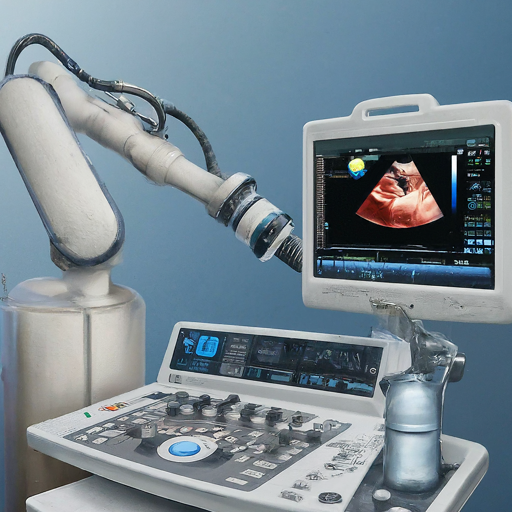Introduction
In the field of healthcare innovation, the introduction of robotic ultrasound devices, notably the pioneering robotic tele-cardiac ultrasound, has the potential to transform patient care by greatly increasing access to diagnostic imaging via a sophisticated telehealth delivery paradigm.
The Robotic Telecardiac Ultrasound System
The robotic tele-cardiac ultrasound system is at the centre of this game-changing healthcare technology, which combines a robotic arm, an ultrasound equipment, and powerful video conferencing technology. This creates a seamless link between patients and medical specialists in different places, overcoming geographical boundaries to offer real-time diagnostic consultations.
Benefits to Patients
The primary benefits of the robotic tele-cardiac ultrasonography device go beyond its technological wonder. Patients, in particular, will profit greatly from this breakthrough. Improved availability to real-time diagnostic ultrasound imaging enables more accurate and quick examinations, contributing to early illness diagnosis. The ease of virtual consultations minimises travel time and expenses, providing a patient-centric approach that is consistent with the changing environment of healthcare.
Benefits for Healthcare Professionals
This technology’s influence extends beyond patients; healthcare personnel also benefit from its revolutionary power. The system’s integration reduces workplace injuries associated with manual ultrasound operations, offering a safer and more sustainable alternative. Furthermore, the robotic tele-cardiac ultrasound system solves the healthcare industry’s persistent lack of technicians, providing a long-term employment solution.
Versatility and Potential Applications
The versatility of the robotic tele-cardiac ultrasonography system makes it a flexible solution with the potential for widespread usage in a variety of healthcare settings. While its immediate use in hospitals is clear, experts anticipate its use in rural community hospitals, pharmacies, rehabilitation institutions, and even senior living homes. This adaptability highlights the system’s potential to transform healthcare delivery on a large scale, addressing communities who may have previously faced barriers to getting professional diagnostic services.
Addressing Healthcare Shortages
One noteworthy aspect of this technology development is its ability to relieve healthcare shortages, particularly in rural areas. In emergency situations requiring quick diagnostic exams, the robotic tele-cardiac ultrasonography system enables specialists to communicate with experts from various places. This skill guarantees that patients in remote places receive prompt and potentially life-saving therapies, therefore reducing the impact of healthcare inaccesibility.
Integration with artificial intelligence (AI)
As healthcare embraces the digital era, the integration of AI cardiovascular diagnostic capabilities with the robotic tele-cardiac ultrasound system is a big step forward. This collaboration of cutting-edge robotics and artificial intelligence seeks to improve cardiac care by detecting cardiovascular problems at an early stage. The use of AI adds an extra layer of diagnostic accuracy, giving healthcare workers vital insights to guide timely actions and perhaps save lives.
Success Stories and Future Outlooks
Recent triumphs, such as a transatlantic robotic cardiac tele-ultrasound examination, demonstrate the usefulness and promise of this novel device. Plans to use the technology in clinical treatment are being developed as it matures. Over the next few months, healthcare practitioners will collaborate closely with sonographers to enhance and adapt the technology for practical usage, with the ultimate objective of making it available to the general public later this year.
Conclusion
The robotic telecardiac ultrasonography system is a watershed milestone in the advancement of healthcare delivery. Its ability to democratise access to professional diagnostic imaging, together with its adaptability and integration with AI, presents it as a game changer in the healthcare sector. As the system approaches general adoption, the healthcare sector predicts a paradigm change in which technology not only complements but significantly improves the quality of patient care, breaking down old barriers and bringing healthcare closer to those in greatest need.
Interested in learning more? Contact us at open-innovator@quotients.com for more information and to organise a personalised presentation. We’re available to answer any inquiries and demonstrate the capabilities firsthand. We look forward to engaging with you!







